
| COURSE HOME | DZOONOKWA MASKS | HILIGAXSTE' MASKS | CANNIBAL SOCIETY MASKS |

| COURSE HOME | DZOONOKWA MASKS | HILIGAXSTE' MASKS | CANNIBAL SOCIETY MASKS |
| ||
The Potlatch |
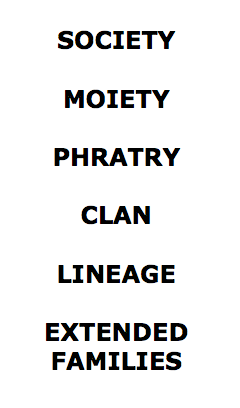
|
HIERARCHY OF KIN GROUPS Moiety: each of two social or ritual groups into which an entire people is divided, especially among Australian Aborigines and some American Indians. Phratry: an exogamous group typically comprising several clans. "Exogamous" means that one must marry someone from outside the phratry. Clan: a group of people tracing descent from a common mythological ancestor. Lineage: a group of people tracing descent generation by generation from a common, founding ancestor. Lineages are often organized into clans, and clans may be organized into phratries or moieties. Social hierarchies are most complex at the heart of the Northwest Coast. They become less complex rapidly as you move to the north, south and west. This pattern corresponds roughly to population density, and to the stability and abundance of resources. |
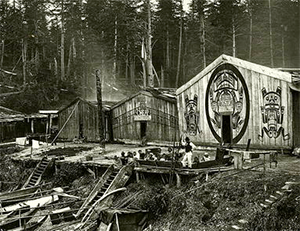 |
THE GREAT HOUSE The "Great House" is the home of a Chief and the ceremonial meeting place for all the families of the lineage or lineages that he leads. Great houses were situated on high ground just behind a beach long enough to accomodate an entire village. They are very large structures, as the image to the left demonstrates.
|
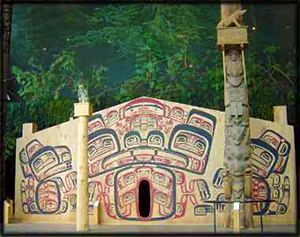
|
This is the reconstruction of a Tsimsian great house that was situated at Fort Simpson, BC, in the mid 1800s. Home |
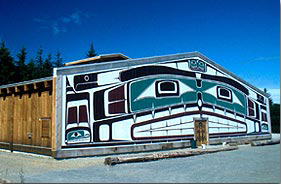
|
The modern great house at Alert Bay, near the northern end of the Salish Sea. Home |
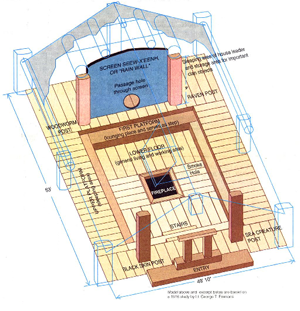
|
The Tlingit Great House known as Whale House at Klukwan on the Chilkat River. Tjhis is a reconstruction based on photographs and the surviving sturcture, itself.
|
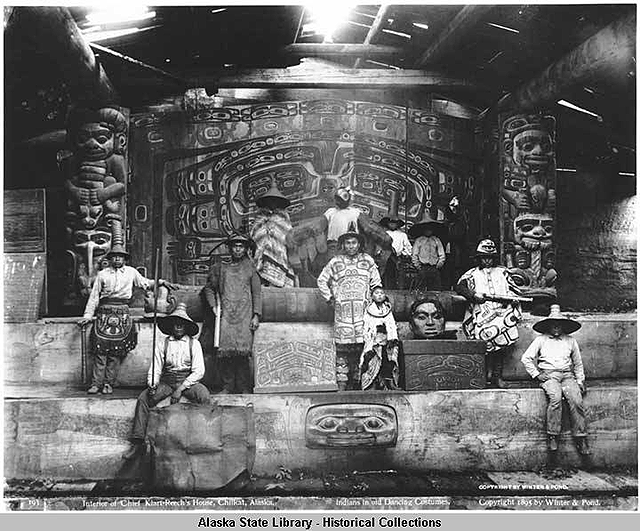
|
The interior of Whale House in a photo taken about 1885 AD. Home |
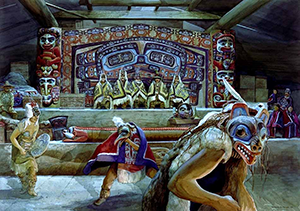 |
A visualization of how a ceremonial dance would look in Whale House in days of yore. Home |
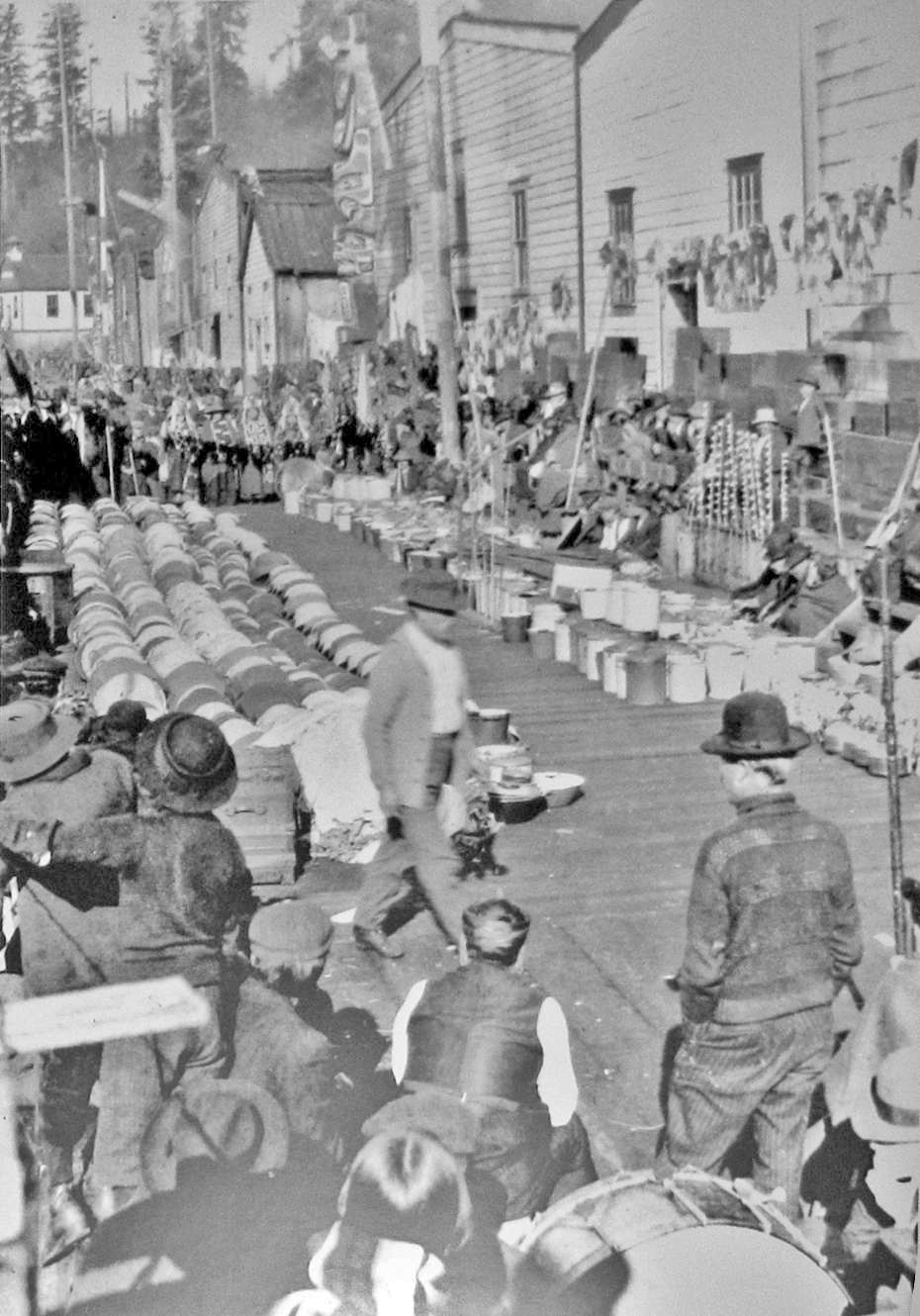 |
Goods distributed by Chief Bob Harris in a potlatch at Alert Bay in 1914. Home |
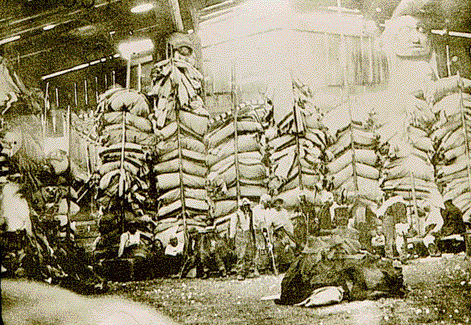 |
Bales of blankets and other materials arrayed in the Great House for subsequent distribution at a potlatch. Home |
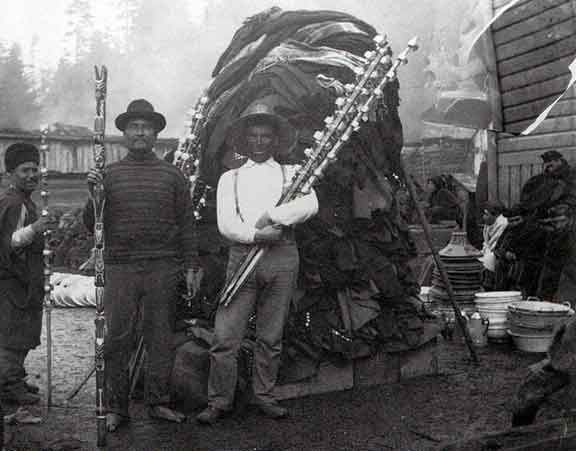 |
Silver bracelets for distribution at a potlatch. Notice how they are being displayed. It is important that you can see and count every one. Home |
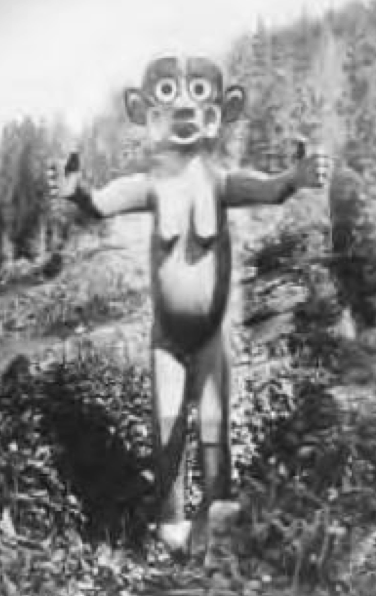 |
The most important symbol of the potlatch is Dzoonokwa, the Cannibal Woman, herself. Home |
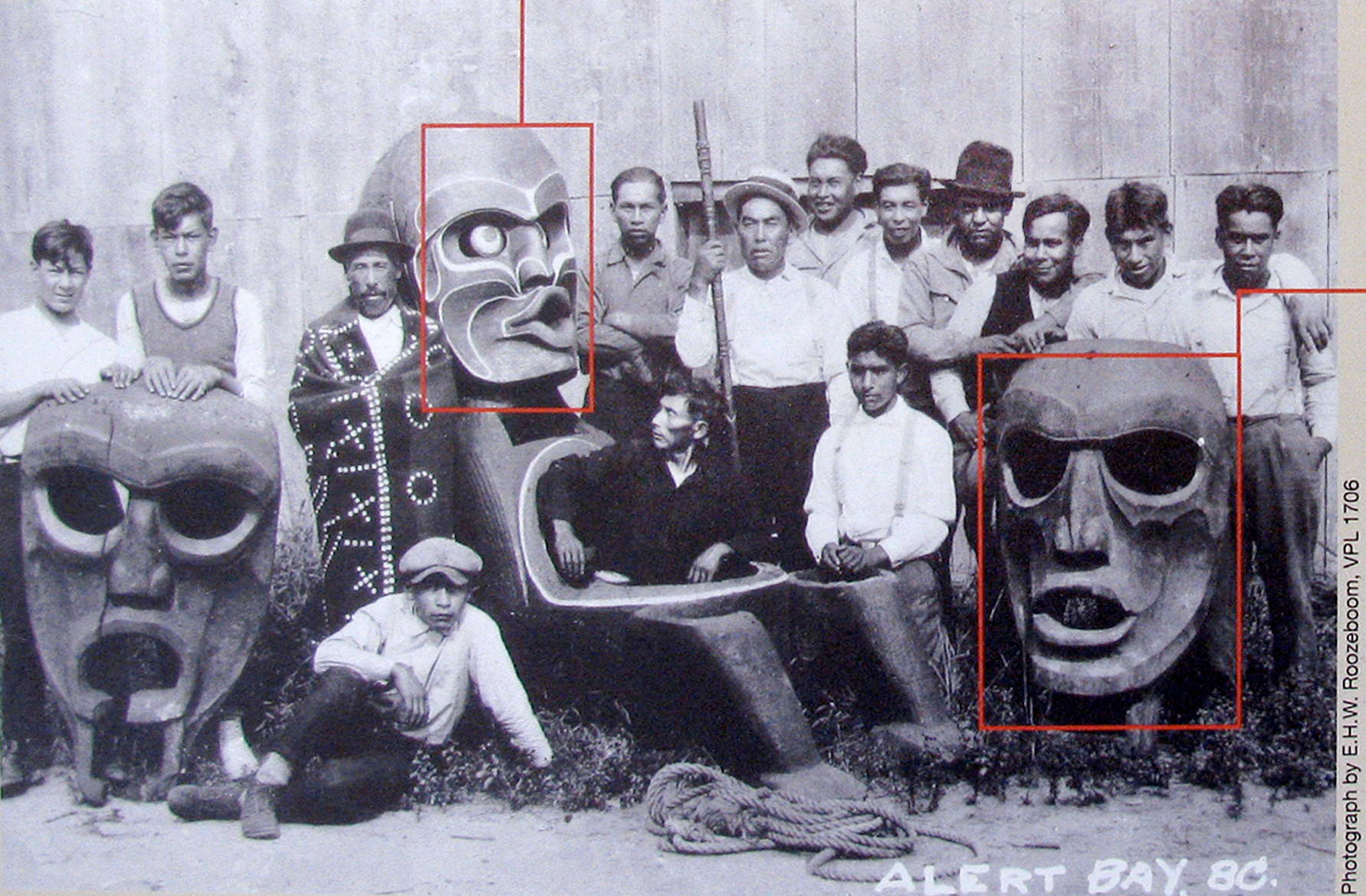 |
Her huge feast bowls are often displayed in front of the great house to demonstrate that she brings health and wealth to those she favors. Here, her feast bowl is surrounded by members of the Musgamagw Dzawada - the Cannibal Woman Society. Home |
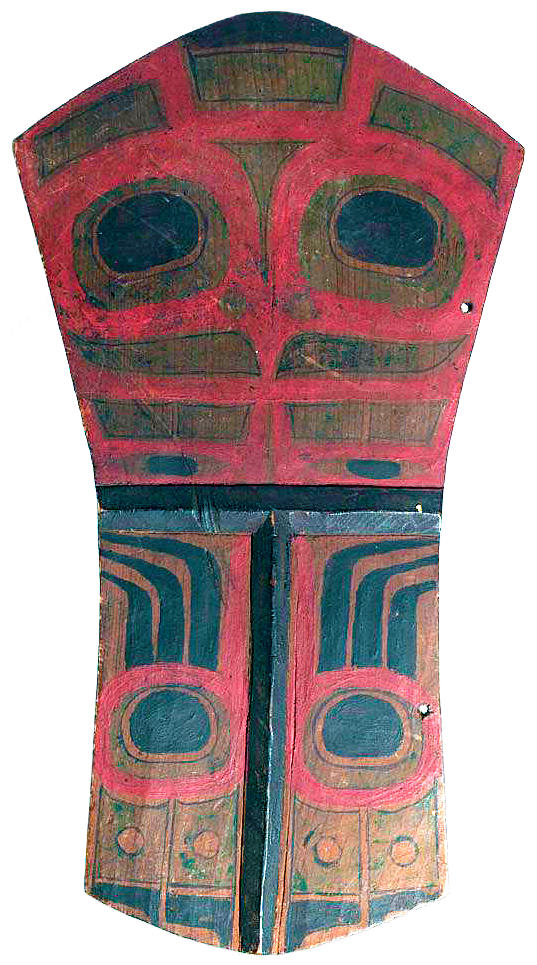 |
At the heart of the winter ceremonies and the potlatch resides the copper. This example is actually the headdress of a Tlingit Shawman, but is still fine for illustrating the formal design features of all coppers. Home |
Text & layout © 2010 by Charles M. Nelson
all rights reserved